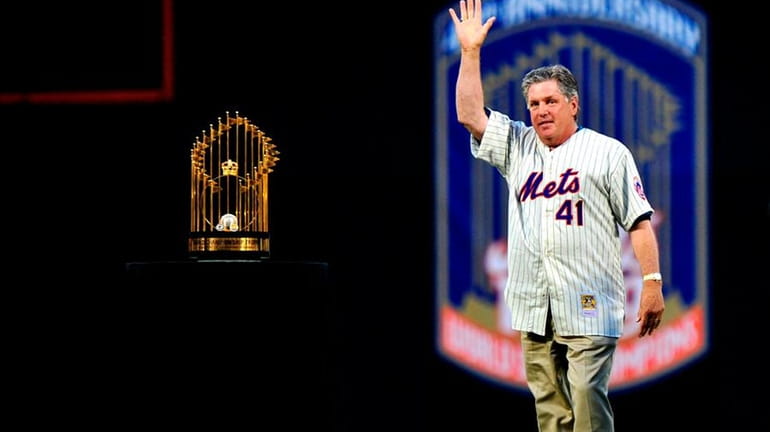Tom Seaver's father, a top amateur golfer, influenced his career

Tom Seaver is glad the Mets are finally honoring their great players and teams of the past at Citi Field. (File photo, 2009) Credit: Kathy Kmonicek
A secret shared among golfers is that their game transcends whatever happens on those 18 holes. The game can impact a golfer's life and family. It even can help turn a golfer's kid into a Hall of Fame pitcher.
Tom Seaver chose his words deliberately when he was asked how his father's career as one of America's great amateur golfers shaped his own career as a 300-game winner.
"Discipline," Seaver said at Citi Field the other day. "Focus . . . preparation."
Recalling Charles Seaver, who was unbeaten for the U.S. Walker Cup team in 1932, the Mets great said: "When he got to the shot, when he got over the ball, he had already started to focus on the decision-making process of the next shot. And I would go to the mound and on certain hitters, it was, 'On the fourth pitch, they're going to hit a ground ball to shortstop.' It was the same process."
Seaver is certain that the competitiveness that made him known as The Franchise and helped the Mets pull off a miracle in the 1969 World Series was framed by the competitiveness that allowed Charles Seaver to hold the Northern California, Southern California and California State Amateur titles concurrently in 1933.
"He was a damn good golfer," his son said of the man who died in 2004 at 93.
The elder Seaver is best known for going 2-0 against Britain at the Walker Cup, the international amateur team match that will return to its birthplace, National Golf Links in Southampton, three years from now. He beat Stanford teammate Lawson Little, a future U.S. Open winner, in the school's 1932 championship tournament. Charles Seaver beat his own dad, Everett, the 1908 Trans-Mississippi Amateur champ, in the 1926 California State Championship.
He lost, 1-down, in the semifinal of the 1930 U.S. Amateur, just missing a chance to meet his friend Bobby Jones in the final - and possibly derailing Jones' Grand Slam. Charlie played 39 consecutive years in the Bing Crosby Pro-Am, teaming with one-time L.I. pro Mike Fetchik to win in 1964. Once at that Pebble Beach tournament, he asked baseball Hall of Famer Ralph Kiner to autograph a picture for his 12-year-old son, a baseball enthusiast. Decades later at Shea Stadium, Tom told Kiner he still had the photo.
Professional golf was not a good way to make a living during Charles Seaver's prime.
"He had a family, he had to work," his son said, explaining why his dad worked in the food industry, popularizing raisins.
At Tom's 1992 Hall of Fame induction, Charles told Newsday's Joe Donnelly that all four of his children were competitive: "You hope the other fellow did the best he could and you beat him. That's truly the amateur philosophy."
Tom learned from his father's approach: "On the first tee, he'd be going, 'I want to hit it there, then I want to hit it there and if it's a par 5, I want to hit it there. I want to be below the hole so I'm putting uphill.'
"The best example of how that transposes is my 300th win, at Yankee Stadium," he said, thinking back to Aug. 4, 1985, when he used the same methodical planning and foresight. Before the game began, he had a strategy for the late innings: Keep Rickey Henderson off the bases, keep the ball on the outer half of the plate against Don Mattingly, treat Dave Winfield specially.
"He's a spotlight player, he wants to be aggressive. So you use his aggressiveness against him," the pitcher said. Sure enough, with two out and two on in the bottom of the eighth of a 4-1 game, he had a full count on Winfield. Seaver went to the stretch, then stepped off the rubber, getting the slugger more keyed up. Then Seaver struck him out with a changeup.
His golf game never developed anywhere near the way his pitching did. "I don't play. I was maybe a 10 at my best when I played. I swung too hard," he said. Nodding at a display celebrating his Mets career, he added, "Then I got into this and that captured all my creativity.
"I used to play at Greenwich and Stanwich. The year they had the Open , I played Winged Foot from the back tees," he said. "On the front nine, I shot 37, 1 over par."
Then the thought occurred to him that he was playing over his head. "I had at least 54 on the back," he said with a laugh, knowing that he had gotten much from golf nonetheless.
